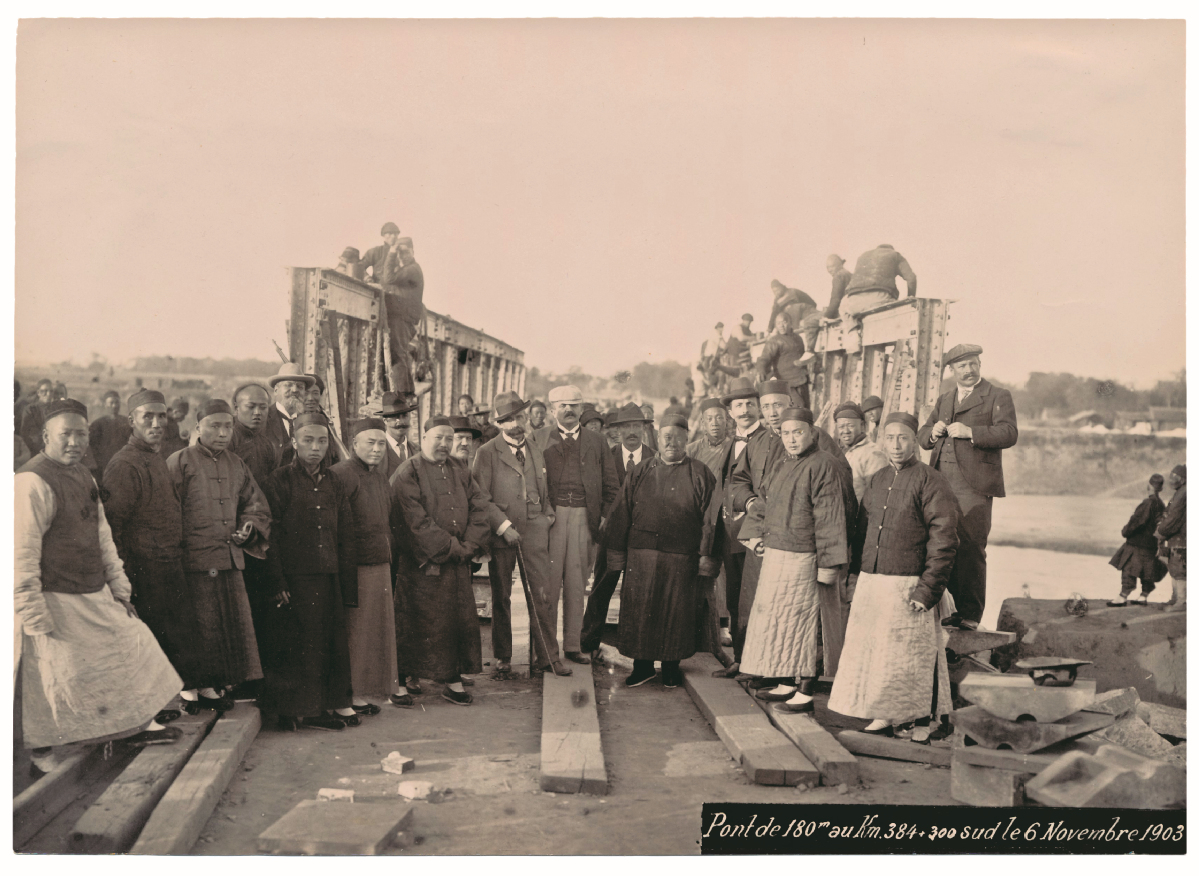Exhibit on 19th century Chinese railway line featured in Brussels
By CHEN WEIHUA in Brussels | chinadaily.com.cn | Updated: 2021-08-16 16:03

China's 38,000 kilometers of high-speed rail are second to none in the world today, with the busiest, the Shanghai-Beijing line, running at 350 km per hour.
But back in the late 19th century China fell behind Europe and North America and fell prey to Western powers. Some of the country's first railway lines had to be built by relying on foreign technology and even financing.
From Beijing to Hankou, a Belgian Adventure in China, is an exhibition at the Train World Museum in Brussels until Oct 10 and tells the story from a Belgian perspective.
Historical documents, letters, photos and other objects, enhanced by modern visual and audio technology and art works, bring back scenes of more than a century ago.
Belgian graphic artist Francois Schuiten and Chinese painter Li Kunwu have produced joint works relating to the construction of the Beijing-Hankou line.
The introduction to the exhibition is brief, but mentions the "increased interference of Western powers" in China, the two Opium Wars by the British, the unequal Treaty of Nanking, in which China was forced to cede Hong Kong, and the storming of Beijing by British troops.
When the Chinese government at the time decided to build a railway linking Beijing and Hankou, part of today's Wuhan, capital of Central China's Hubei province, it chose Belgium, a relatively small country with excellent railway expertise but far less imperial ambition in China than other Western powers.
Thierry Denuit, head of Train World, said preparation for the exhibit and a book on the railway project started five years ago.
He described the construction of the railway as an "extremely fascinating industrial story", like the Suez and Panama canals, but was little known to the outside world, including among Belgians.
"And the idea for the exhibit came up because this year is the 50th anniversary of diplomatic relations between Belgium and China," Denuit said.
Jean Jadot, a Belgian engineer on the railway project, is featured prominently in the show, thanks to his namesake grandson, who provided many historical artifacts from the family archives. It includes Jadot's daily letters to his wife, in which he described the railway's progress.

When the 37-year-old arrived in China in 1898, he already had rich experience on a railway project in Egypt. He was appointed to coordinate and implement the 1,213-kilometer railway project. The line was finished in seven years, with tens of thousands of Chinese laborers working on the site. A 3-km bridge over the Yellow River was regarded as a huge engineering achievement at the time.
According to the exhibition, the foundation for the rail project was laid when Li Hongzhang, a senior official and top advisor to Empress Dowager Cixi, visited Belgium in 1896 at the invitation of King Leopold II.
In Belgium, the Societe d'Etude des Chemins de Fer en Chine (China Railways Study Company) was founded in 1897 to finance the project, with investors from both Belgium and France. The building and operating contract for the line was later signed in Shanghai in 1898.
After the line was put into operation, it was hugely profitable. The then-Chinese government decided to repurchase the loan to manage the line itself. The operation of the line was officially transferred to the Chinese on Dec 31, 1908, but many Westerners were still employed to work on the line until the 1930s.
The exhibition ends with railway development in China since the People's Republic was founded in 1949, including the massive high-speed railway network built in the past two decades and the Belt and Road Initiative to build connectivity overseas.
Denuit, the Train World chief, said they were fully aware of the sensitivity of that part of history among the Chinese. "We try to bring a balanced picture," he said.
He said he wanted to show more information about China's high-speed railways if he could find a Chinese partner for the exhibition.
"There are more high-speed rails in China than the rest of the world combined. China is No 1 in high-speed rails," he said.
























